
Background
Our story is set in a little fishing village called Lamba, in the shadow of a mountain fortress in a province of the war-torn Kingdom of Kongo.
Today the village is in the Democratic Republic of Congo near the port of Matadi. The city’s name comes from the Kikongo word for rocks: tadi, giving us a fleeting glimpse into the history of the Bakongo people, whose name may be derived from the Bantu word for mountains: nkongo.
Pay close attention and you might spot other clues left behind by the ancestors: in the shapes and images on the limestone outcrops around Lamba, the leopard head of the Congolese emblem, in capoeira dancing in Brazil, jazz music in New York and the story of Brer Rabbit read to children by mothers the world over.
The natural world held great significance for the residents of the Congo Basin. It was what separated their world from the mountain where the dead resided. The ancestors were the true owners of the world and from the depths of the river they influenced everything that went on in Lamba, from the quantity of fish caught to the number of children born.
Provided their laws were respected they used their powers to protect the earthly members of their clan. The chief was their representative on earth and the guardian of the ancestral relics. Chief Malongo’s name reflects this deep connection: Ma means the son of in Kikongo. The chief was a man of great status and a slit drum would have been played whenever he was addressed. When the delegation headed from Lamba to Matamba for an audience with the king, Chief Malongo would have been carried on a litter for the 250-mile journey. However, his leopard-skin necklace and the leopard teeth that adorned his cap were more than just a status symbol.
Through them the chief was imbued with the leopard’s strength and power. At village councils, called palavers, a drum called a mondo would have been played as the chief administered justice with the n’ganga by his side. The n’ganga was a herbalist and spiritual healer who also had a high status. He wore leopard-skin clothing decorated with bird feathers and used clay from the river bed to paint white circles around his eyes to help him detect evil forces. His frightening appearance would have inspired awe among the villagers. The n’ganga used magical substances kept in a n’kisi to bring good fortune to the village. The n’kiski was a hollowed-out container or figure that embodied the spirit of one of the n’ganga’s ancestors and the items within were imbued with ancestral force. They included herbs, claws, feathers and other natural substances but the key ingredient was clay from the
riverbed which added an extra layer of protection. To combat evil forces, a particularly aggressive n’kisi called a n’kondi was needed. The n’kondi was associated with birds of prey and may have been covered in feathers. Its reflective surface allowed the ancestral spirit to hunt down n’doki, malevolent beings who looked very much like witches to European outsiders. But n’doki weren’t innately evil. Instead, their destructive powers came from their intentions and the motivations behind them, particularly greed or envy. They used their powers to wreak havoc, causing infertility, illness and even death. At night they would turn into predatory birds and fly through the skies. Only the n’ganga had the power to ward off a n’doki or to repair any damage it may cause. Ordinary people could do some magic and might be contacted by ancestors through omens or dreams but only those with special powers like twins or albinos and the n’ganga could communicate with them directly and only the n’ganga was a match for a n’doki. Most
n’ganga were men but, like Kimpa, some women would train to become one. Later we will meet a very special woman who was a n’ganga in another part of the Kingdom.
In Lamba life was dictated by the elements, the seasons and the cycle of the sun. At night the sun descended into the ancestral realm before re-emerging into the land of the living at sunrise. When a child was born it was thought that a living sun had risen into the upper
world. It’s hardly surprising that a child like Moyi Kitoko would be revered by his mother. Two rainy seasons brought some relief from the constant heat. Huts had sloped roofs to guard against the rainfall which began in September when the women would hoe the fields into ridges to prevent erosion.
The section of the river, upstream of a series of dramatic waterfalls, supplied the villagers with species of fish that no one else on earth would ever taste. When they were not fishing the men might hunt goats or pigs with spears and arrows. The women would tend the fields and, in addition to cassava, might have grown peppers, bananas, yams or kola nuts. Huts were made out of baked clay, mud bricks, wood and grasses and sat on a foundation of stones. They would have been decorated with painted mats and had a fireplace where the women would make stew. They would use a pestle and mortar to pound cassava into flour for the mfundi dumplings to dip in it. This would be washed down with wine from the sap of palm trees which had been tapped by the men. It was said that it was for the men to bring the food wine and the women to bring the winefood. If the men didn’t bring the wine, the women would refuse to make the food. When the village wished to secure a royal bride for Lo, some of this wine would have
been poured into an elaborate cup decorated with pine leaves and sent to the King as an invitation to enter into discussions. The bark would have been kept to make clothing which would have doubled as blankets in the evening. The chief would have inherited his rank but from his maternal uncle rather than his father. However, despite the village hierarchy land was held in common and harvests were shared equally among the villagers regardless of status. Any surplus was traded at markets, paid to the king in taxes or left as offerings to the ancestors. History was passed down through folktales, song and dance.
Animals represented particular human characteristics and fables served to impart a moral lesson. Birds were portrayed as
messengers or avengers of crime and some tales would have been sung in the style of a bird. Characters included cunning tricksters, mythical monsters, avenging hunters and envious wives. Victims often met their demise at the bottom of a hole, having been pushed by a wily adversary. They might then come back to life, sometimes in animal form.
Dance was another medium through which stories were told, but was also used to celebrate
a plentiful harvest, honour new mothers or rejoice at the birth of twins. During the first stage of the dance the drum would have been played alongside the conflicting rhythm of the pestle and mortar. Then, the drummer would have launched into a continuous rhythm as the women rotated their hips.
However in 17th-century Lamba, there would have been little to celebrate. After decades of fighting between rival claimants to the throne villagers would have been traumatised and in a constant state of fear. Throughout the kingdom ordinary villagers and nobles alike were being taken prisoner. Some were forced to work for their captors but the majority were exported to Brazil or North Carolina as slaves. Those who escaped this fate risked going hungry as armies pillaged their fields for food. In Lamba villagers would have been ready to abandon their homes at a moment’s notice to take refuge in King João’s mountain stronghold at nearby Mbula. Their traditions too were under attack. Christianity had been practised for six generations
but Kongolese beliefs and customs had always coexisted alongside it. The Kongolese saw no contradiction between the two since there were many parallels. Even the Kongo cosmogram was a cross and symbolised rebirth. But 75 miles away in the royal mountain fortress of Kibangu, Capuchin priests were urging the King to clamp down on these practices and those who engaged in them. Throughout the realm women were being flogged for wearing the wrong clothes, villagers chastised for eating the wrong foods, and chiefs stripped of their regalia. Baganga 1 lived under constant
threat of excommunication, enslavement and execution as their religious communities burned to the ground around them.
In the valley below King Pedro’s enclosure lived one of the initiates of such a community, a young Christian noble woman called Kimpa Vita. Her Christian name was Dona Beatriz but her Kongolese name, Kimpa Vita, suited her better. Kimpa derives from the Kikongo word for fable or legend, whilst Vita means ambush or war. As a special type of n’ganga who specialised in social problems, she saw the effect the conflict was having on ordinary people and was deeply affected by it. She longed for peace and unity. In August 1704 she awoke following a period of sickness claiming that she had died and come back to life. She said that she was possessed by the spirit of St Anthony of Padua and that he had commanded her to go forth and preach her message to King Pedro. She climbed up the mountain to the fortress and demanded an audience with the King. In the name of St Anthony, she implored him to reoccupy the long-abandoned capital of São Salvador and reunite the kingdom for it was God’s will. Rebuked by him and later by his rival in Mbula, she preached her message in the villages instead. She claimed that Jesus had been born in São Salvador and baptised in Kikondi, just a few miles from Lamba. She rejected the Christian cross, denounced images of white saints as false idols and rewrote the Salve Regina to reflect Kongolese beliefs. Like Kongolese religion, her new faith stressed the importance of intention in determining who was good and who was evil. She waged war on all forms of greed and jealousy which were considered the source of the malevolent powers of n’dokis. As an effective infertility healer she was popular among women, since they lived in fear of being abandoned by their husbands. News of her miracles spread and her message of peace won her a huge following among villagers who had endured war, humiliation and fear for decades. By November they had marched on the long-abandoned capital and reclaimed it in the name of Saint Anthony. Kimpa Vita took up residence in the cathedral and sent missionaries, known as Little Anthonys, to the provinces and to rival kingdoms. Commoners and nobles alike flocked to her side, including the King’s own wife and one of the army commanders sent by him to reoccupy the city. When the priests’ denouncements of the new religion and excommunication of its followers proved ineffective, King Pedro began to recognise the political threat Kimpa Vita’s movement represented. She was arrested and, at the urging of Father Lorenzo put on trial for heresy. She received her death sentence in the King’s temporary capital in full view of the woodpile that had already been assembled by the crowd. The King and his Priest debated whether baby Antonio, who was still in his mother’s arms, should burned alongside her but ultimately spared his life. He was taken from her by church officials and would be baptised Jeronimo. His mother was beaten by a mob then dragged through the public square to the awaiting pyre. Vita Kimpa’s movement survived for a short time after her death but in 1709 King Pedro marched on the capital and defeated the remaining Antonians, stamping out the religion for good. But her ideas lingered in the villages of the Kongo Kingdom and echoes of her spirit of resistance could be heard centuries later in the defiant rallying cries of slaves from North Carolina to Haiti 2.
Historical figures
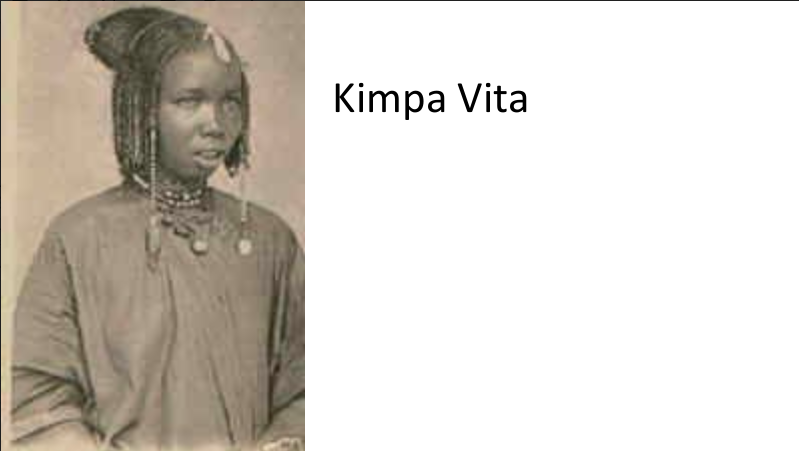

Religion and beliefs

Maps and locations
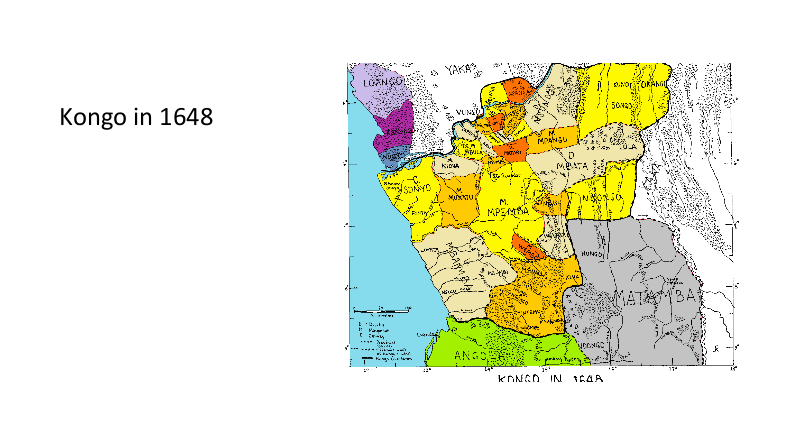

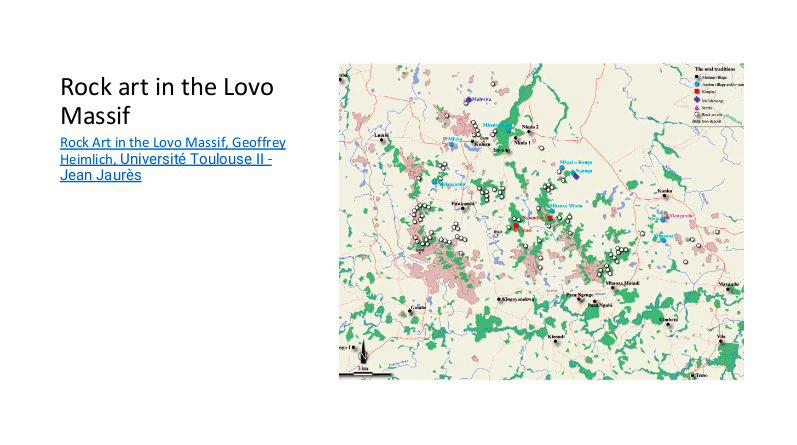
Geographical/locations

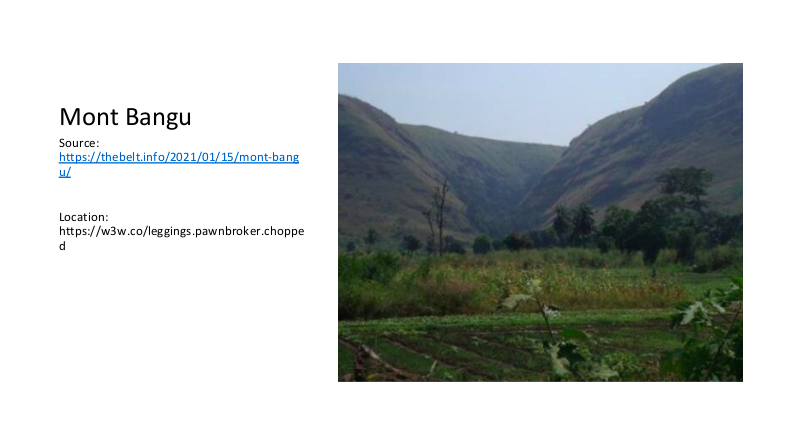
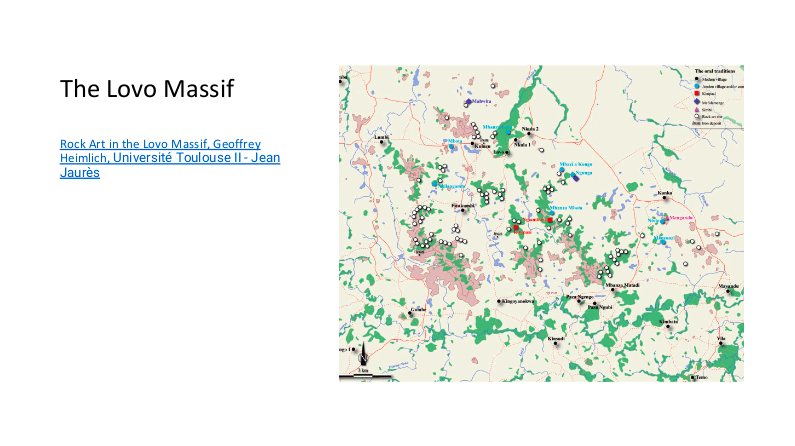
Glossary
Singular Definition Category Bakalu The ancestral spirits who lived underground. They were members of a clan (kanda) but as owners of the land were a class above the earthly people who tended it (bansu). They had supernatural powers and influenced everything from the abundance of fish to fertility. Provided their laws were respected they would use their supernatural powers to protect the kanda against evil spirits (n’kisi) and wtiches (n’doki). Ancestors and Spirits Bisimbi Children such as twins and albinos who had a special status in Bakongo society and were associated with the water spirit, Mami Wata. As such they could communicate with the ancestors. Twins are the subject of many folktales. Social hierarchy Congo River The second longest river in Africa and world’s deepest. It has a high degree of ecological diversity and is home to some 800 fish species, many of which are not found anywhere else. Rivers Vita Kimpa A 17th century Congolese prophet and activist and founder of Antonianism, a new religion that combined the tenents of Catholicism and the Kongo Religion. She was a trained Nganga and specialised in curing infertility which was considered a curse since men would abandon their wives if they could not bear children. Her political influence represented a threat to royal power and Portuguese interests and she was arrested burnt at the stake as a heretic at the age of 22. The name « Kimpa » derives from nkoumbou ya soulou, which in Kikongo can mean fable, legend, riddle, mystery, or someone’s difficult character, whilst Vita means « ambush » or « war » Historical figure Beto Envy was considered a cause of evil and was intimately associated with witchcraft. Ngangas, Ndoki, Kindoki and Loka Kindoki Power for evil-doing aimed at bringing about death or injury. It may be inate or acquired. One of its chief causes is envy. Ngangas, Ndoki, Kindoki and Loka Lamba Birth place of Lillia Bongi’s father. Fishing village on the banks of the River Congo just south of modern-day Matadi surrounded by limestone outcrops and hills. In the 17th century it would have been part of the Nsundi province of the Kingdom of Kongo, some 60 miles from the capital Villages, Towns and Capitals Dona Beatriz Saint name of Kimpa Vita. Historical figure Loka The kikulu word for magic which could be performed by anyone. Ngangas, Ndoki, Kindoki and Loka Lovo Massif Llimestone outcrops near the village of Lamba, with numerous caves and rocky overhangs decorated with paintings and engravings of weapons, animals and symbols, some dating from the prehistoric era and others from the time of our story. Today, the sites are under threat from limestone mining. Hills and Mountains Mwene The title of king, meaning a person holding authority. Their regalia included a headdress and jewllery made from copper and ivory. Ahead of the meeting a cup of wine elaborately decorated with pine leaves (a mbungu) would have been sent as an invitation to discuss a serious matter. The meeting would have been preceded by the sounding of a ceremonial bell, « the bell of kings », followed by be a ritual exchange of greetings and a statement of intent. The king would hold court from a platform covered in palm cloth and would distribute food to his guests who would express their gratitude by clapping loudly. Since Kongo society was organised on matrilineal lines, the king’s successor would be his nephew. Social hierarchy Matamba Kingdom located in what is now the Baixa de Cassange region of modern-day Angola, some 250 miles south of Lamba. The kingdom paid tribute to the Kingdom of Kongo and had a history of being ruled by powerful women. Kingdoms and provinces Mbongo za longo Bride wealth paid by the kanda of the husband to that of the wife. This would be refunded if the marriage did not last. Marriage and Family Sompa The word for marriage, meaning « to borrow ». The marriage could be easily broken by either party. For example, Kimpa Vita had two husbands in her short life. Marriage was used to forge alliances with neighbouring groups. Accumulating a large number of wives was a sign of social status and a member of the ruling elite might have hundreds of wives. However, the advent of Christianity saw a shift towards monogamous marriage. Marriage and Family Mvula a nene The great rains that came every January. They were preceded by the little rains in September. Climate, weather, seasons, night and day N’doki Witches harnessed supernatural forces to cause harm, driven by selfish motives such as envy or greed. They could cause infertility, illness or death and unleash thunder and lightening. They could shapeshift and at night would turn into predatory birds and fly through the skies. The nganga was the anti-witch and only he had the power to prevent or repair the ndkoki’s actions. Ngangas, Ndoki, Kindoki and Loka Nganga From the kikongo word “knowledge” or “skill”. Bangana were spiritual healers who derived considerable social status within Kongo from their power to mediate with the spirits and ancestors. They harnessed their spiritual power to divine the causes of illness or societal afflictions and prepared remedies in minkisi. Banganga could also ward of witches and heal their victims. They assisted the chief in administering justice through the use of poison ordeals. They wore a costume of animal skins and bird feathers and ornate jewellery. They used clay from the river bed to paint white circles around their eyes, allowing them to see beyond the physical world and identify the sources of evil and illness. The nganga might be accompanied by an entourage of drummers when performing his magic. Ngangas, Ndoki, Kindoki and Loka Nkisi or Nkishi Spirits or an object that a spirit inhabits. The spirit was thought to have been fished out of the waters from one of the nganga’s ancestors. The object was usually a container for spiritually-charged substances called balongo. This could be a figure or an object like the one used by Lo in our story. Banganga use the their nkisis to harness the powers of the dead and ensure good harvests, abundant fish, fertility and so on. They are also used to cure illness or combat ndoki. Nkisi can be « of the above » or « of the below ». Those of the above were associated with the sky, rain, and thunderstorms and tied to violent forces. The below nkisi were associated with the earth and waters on land and used to maintain order and justice. Ngangas, Ndoki, Kindoki and Loka Nkondi From the verb -konda, meaning « to hunt ». An aggressive form of minkisi statue that hunts down and attacks wrong-doers, witches, or enemies. The eyes and medicine pack covers were a reflective surface to allow the nkisi to see in the spirit world and hunt for its prey. Some nkondi figures were adorned with feathers and were associated with birds of prey. Ngangas, Ndoki, Kindoki and Loka N’loko A curse Ngangas, Ndoki, Kindoki and Loka Bankete Word attributed to those who do not do evil, meaning « good ». Ngangas, Ndoki, Kindoki and Loka Nkuluntu The chief of the tribe. The Chief of Lamba is called Malongo and would have been the most direct descendant in the oldest matrilineal line and his name (« Ma » means « the son of ») reflects his deep connection with his ancestors. As the priest of the ancestral cult (Nganga Kakulu) he was the ancestors’ representative on earth and the guardian of the sacred basket of ancestral relics. He would perform prayers to the ancestors every few days. The word « fumu » dervies from the kikongo word for « judge ». Chiefs were greeted and treated in the same ways as gods. At his intitiation the chief may have been enthroned on a leapord skin to acquire a leapord’s power. He would have worn a bracelet on his right arm. Chiefs were usually men but by the time of our story some were women. Social hierarchy Nlongo Substances chosen for inclusion in nkinski. The main ingredient was clay from the riverbed where the ancestral spirits resided, to which might be added herbs, leaves, tree bark, roots, the beaks and feathers of birds, claws, horns, teeth, tails or hair.They are often translated as ‘medicine’ but they are not applied or ingested. Rather, the nganga would be scatter, burn or spit them depending on the desired outcome. Ngangas, Ndoki, Kindoki and Loka Nsi a bafwa “The land of the dead”, a mountain separated from this world (nza yayi) by a body of water (Kalunga). For this reason the riverbed held particular significance and was the source of the clay used as face paint by the nganga. Life and Death Bayisi Water spirits, the primary agent of society’s wellbeing, they ensure fertility, good harvests and abundant fish Ancestors and Spirits Nsundi Province of the Kingdom of Kongo. Its capital Kikondi was located on the Inkisi River, near the present-day village of Sangololo, a stone’s throw from Lamba. King Alfonso, who was said to have been the first king to be baptised, had governed the province. For this reason some claimed it was the birthplace of the Kongolese church. Vita Kimpa claimed that it was here, not Nazareth, that Jesus had been baptised. Kingdoms and provinces Nyombo A box filled with diverse ingredients used by the nganga to divine and cure disease. These would have been rubbed over the body with clay and palm oil Ngangas, Ndoki, Kindoki and Loka Nza yayi “This world”, thought to be an enormous mountain, separated from its twin, “the land of the dead” (Nsi a bafwa) by a body of water (Kalunga) Origin Myth and Gods Tadi Flat-topped mountain characteristic of the area around Lamba. Villages withdrew here during the chaos of the civil war. Hills and Mountains Vata Kikongo word for village. Typically it would have four entrances with the residences of the four most important members of the community. The land was held in common and harvests were shared equally with any surplus was traded at markets or paid to the king as taxes. Men would fish and hunt whilst women tended the fields. Crops included peppers, bananas, yams and kola nuts. The sap of palm trees was tapped for wine and its bark was used to make clothes. Life was far removed than in the urban centres but frequent civil war brought disruption when men were called up to fight or armies foraged for food in their fields. In some cases entire villages fled to the hills out of fear that they might be captured and sold into slavery. This is the context in which Vita Kimpa came of age and had her religious awakening. Villages, Towns and Capitals Kanda The clan. The clan incudes two classes of people: the ancestors who live under the earth and their earthly descendants who live under the sun. Kandas were organised on matrilineal lines. Social hierarchy Ikoku A collective dance for joyful occsions. The first phase, called u sayise is made up steps to regular hand-clapping and beats of the drum, whilst the second phase, u dyame involves intense undulating hip movement to continuous drumming. The movement of the hips is considered feminine and has sexual connotations.The pounding of the pestle and mortar, a symbol of sexuality and dancing, would have added to the rhythmic effect. Music, Dancing and Ceremonies Mont Bangu Mountain in the Crystal Mountain range. It has an elevation of 628 metres, 50 miles from Lamba Hills and Mountains Homes were made out of baked clay, mud bricks, wood and grasses and sat on a foundation of stones. In some cases they would be decorated with painted mats.They would have a fireplace on which to cook and sleeping mats on the floor. Daily life Kibulu Animals had particular signficance in Kongo mythology, art and culture. Spirits had the power to turn others into animals or take on an animalistic form themselves. Animism and animals Kinsamu Kikongo word for tale or fable. The animalistic beliefs that were a cornerstone of Kongo religion featured heavily in the oral tradition. Storytelling would have been used to communicate a shared history and traditions. As in Orwell’s Animal Farm centuries later, animals represented particular human characteristics such as cunning (the hare) and deception (the hyena). Fables served to impart a moral lesson and reinforce shared values. Common themes included jealous wives, husbands or wives disappearing, falling into holes and/or being raised from the dead, infertility, heroic hunters, vengeance, treachery and ingratitude.Storytelling is used in much the same way today, albeit through modern media. The Tales of Us multimedia series is reconnecting communities with their cultural heritage and raising awareness of the rainforest and the urgency or protecting the world’s ecosystems. The short film The Little Fish and the Crocodile is a modern retelling of a Congolese myth and the docuseries Akesi and the Congo River explores the themes of grief, trust and bravery as a young boy learns about his ancestral history, local mythologies and the ecosystems of the Congo basin with his totem geko. Oral tradition Inyonyi? Bird. Birds dominated kongo mythology, customs and storytelling. Ndoki figures were considered to be « of the above » and as such were associated with birds of prey, their function being to hunt down wrongdoers. For the same reason, in many Bantu cultures particular specis of bird were associated with lightning. The Nganga would use beaks, feathers and claws for his remedies. Some would have been adorned with feathers. Birds were a common theme in folklore as messengers and revealers and avengers of crimes. Animism and animals Kiniumba-Lemba Mask Clothing and jewellry Kinkulu Tradition, custom, history. Oral tradition Kinsemi Creation. In Mbuti (Bambuti) mythology the god of the hunt has a bow made from two snakes that look like a rainbow. After sunset every day, Khonvoum gathers fragments of the stars and throws them into the sun to revitalize it for the next day. Origin myths and Cosmology Sun The birth of a child is seen as the rising of a living sun into the upper world. Climate, weather, seasons, night and day Nsungi a mvula The rainy season. The women of Lamba would hoe the fields into ridges in preparation for the coming rain. Climate, weather, seasons, night and day Nseluka Sunrise. Life was seen as a cyclical movement between two worlds, mirroring the path of the sun. Sunrise signifies rebirth. Climate, weather, seasons, night and day
First a frame of wood was erected and then the bricks were placed against it. There was also a foundation layer of stones upon which these bricks were placed, to prevent moisture from climbing up through the ground.
The roofs of these houses were mainly sloped as a guard against the constant rainfall.
Often there would be a fireplace incorporated into the walls, which also aided in keeping the insides warm and dry.
